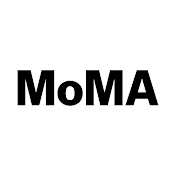
This image is presented as a "thumbnail" because it is protected by copyright. The museum respects the rights of artists who retain the copyright to their work.
The Widow I (Die Witwe I)
1922-1923
Käthe Kollwitz
German, 1867-1945
European Art
Käthe Kollwitz explored the physical and spiritual dimensions of the human condition through printmaking, a medium that resonated for German artists eager to renew the tradition of Northern Renaissance masters such as Albrecht Dürer. After losing one of her sons in World War I, Kollwitz produced a portfolio of seven stark and emotionally raw woodcuts about the brutality of war and its consequent grief and devastation. The Volunteers depicts a line of young soldiers, including her own son Peter, marching behind the skeletal figure of Death playing a war drum. In The Widow, the harsh texture of the woodcut intensifies the visceral sensation of the woman’s anguish. With no narrative details to place her figure in a particular time or place, the work stands as a universal image of loss and mourning.
Titus Kaphar: Historically, we look at the world from one perspective. When we look even at the politics of the time, the victors get to tell that story. We don’t look at the perspective of the folks who are dying on the battlefield. We look at the perspective of the folks who won that particular war because they wrote that history. I think what it is to be in this moment right now is to know that ultimately there are many perspectives. . . . To some degree, it’s about making space to hear those other voices and in other cases correcting the record by going back in time and saying, “Wait, actually, there were some folks who were saying stuff. . .” We have to acknowledge that there were folks who existed, who resisted, who said, “No, I’m not going to fall into that same trap.” I think it behooves us to highlight those people more. These are powerful.
Titus Kaphar: Historically, we look at the world from one perspective. When we look even at the politics of the time, the victors get to tell that story. We don’t look at the perspective of the folks who are dying on the battlefield. We look at the perspective of the folks who won that particular war because they wrote that history. I think what it is to be in this moment right now is to know that ultimately there are many perspectives. . . . To some degree, it’s about making space to hear those other voices and in other cases correcting the record by going back in time and saying, “Wait, actually, there were some folks who were saying stuff. . .” We have to acknowledge that there were folks who existed, who resisted, who said, “No, I’m not going to fall into that same trap.” I think it behooves us to highlight those people more. These are powerful.
- Maker/Artist
- Kollwitz, Käthe
- Classification
- Formatted Medium
- Woodcut in black ink on wove paper
- Locations
- Place made: Germany
- Dimensions
- image: 18 3/4 × 14 9/16 in. (47.6 × 37 cm) sheet: 26 x 18 11/16 in. (66 x 47.5 cm)
- Inscribed
- Lower left in graphite: "88/100"; lower right in graphite: "Bl. 4 zn Folge: Krieg/Die Witwe"; lower right in pencil: "Käthe Kollwitz"
Have a concern, a correction, or something to add?


![Photo of collection object Working Woman (with Earring) (Arbeiterfrau [mit dem Ohrring])](https://du1veq5hgyp3c.cloudfront.net/art/bkm_74847-s.jpg)











